Groups of preschoolers in kindergarten are usually divided according to age. But there are institutions where kids are distributed into different groups, referring to several breakdown principles. This article will indicate in detail how the kids are divided into teams and what groups generally exist.
Division by age
Ever since Soviet times, pupils of preschool educational institutions were divided into age categories. This method of distribution is now considered not only relevant, but also the main one. Let's indicate which units the guys are divided into:
- nursery - designed for babies from 1 to 2 years. When creating optimal conditions, they form the necessary self-service skills, and at the same time, attention is paid to the development of psychomotor function, which directly affects the development of speech;
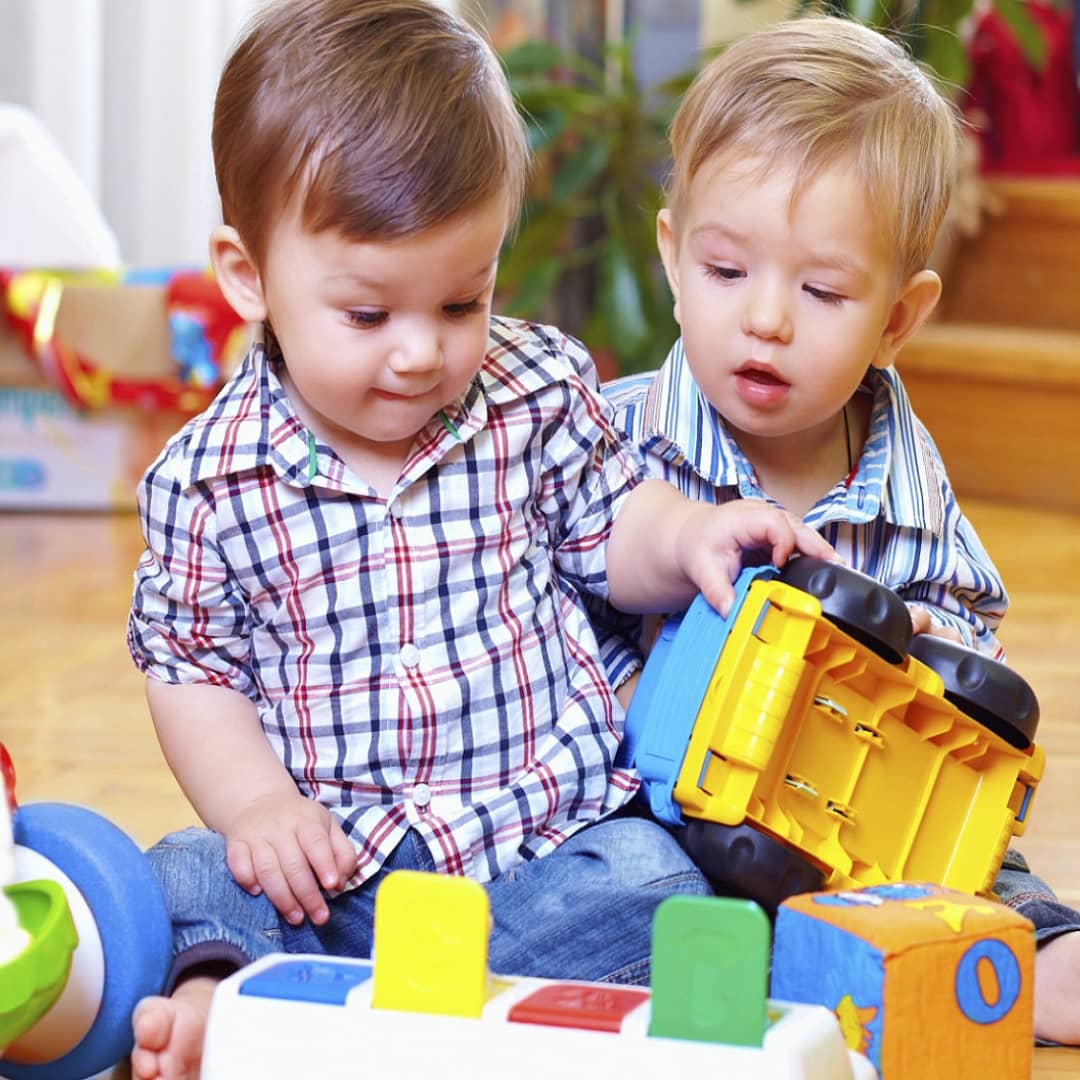
- junior groups in kindergarten- These are peanuts aged 2 to 4 years. The task of educators is to develop their memory, thinking, oral speech. It is carried out with the help of role-playing games;
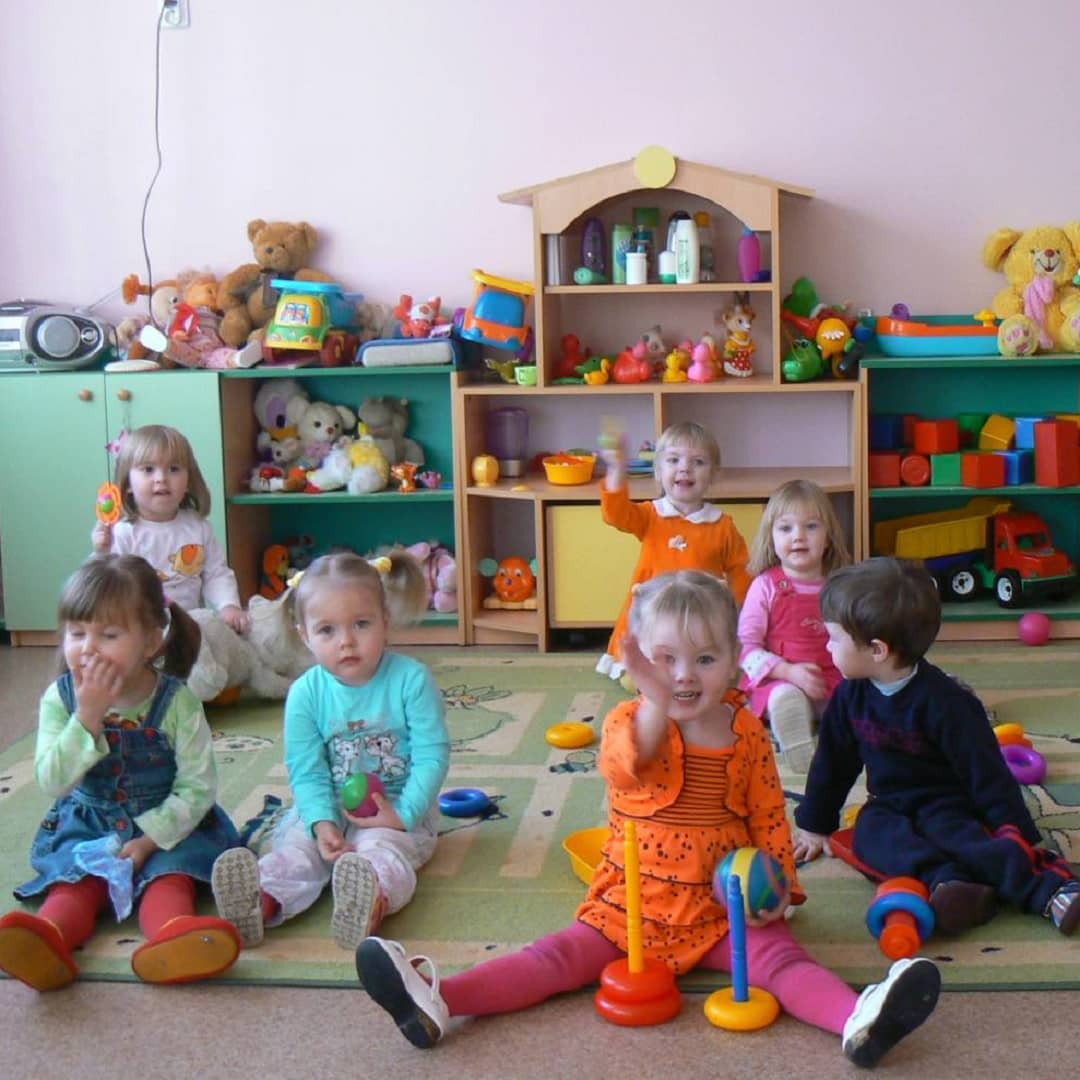
- the average detachment of the preschool educational institution is preschoolers 4-5 years old. At this age, they form causal relationships, as well as moral, moral and aesthetic ideas;
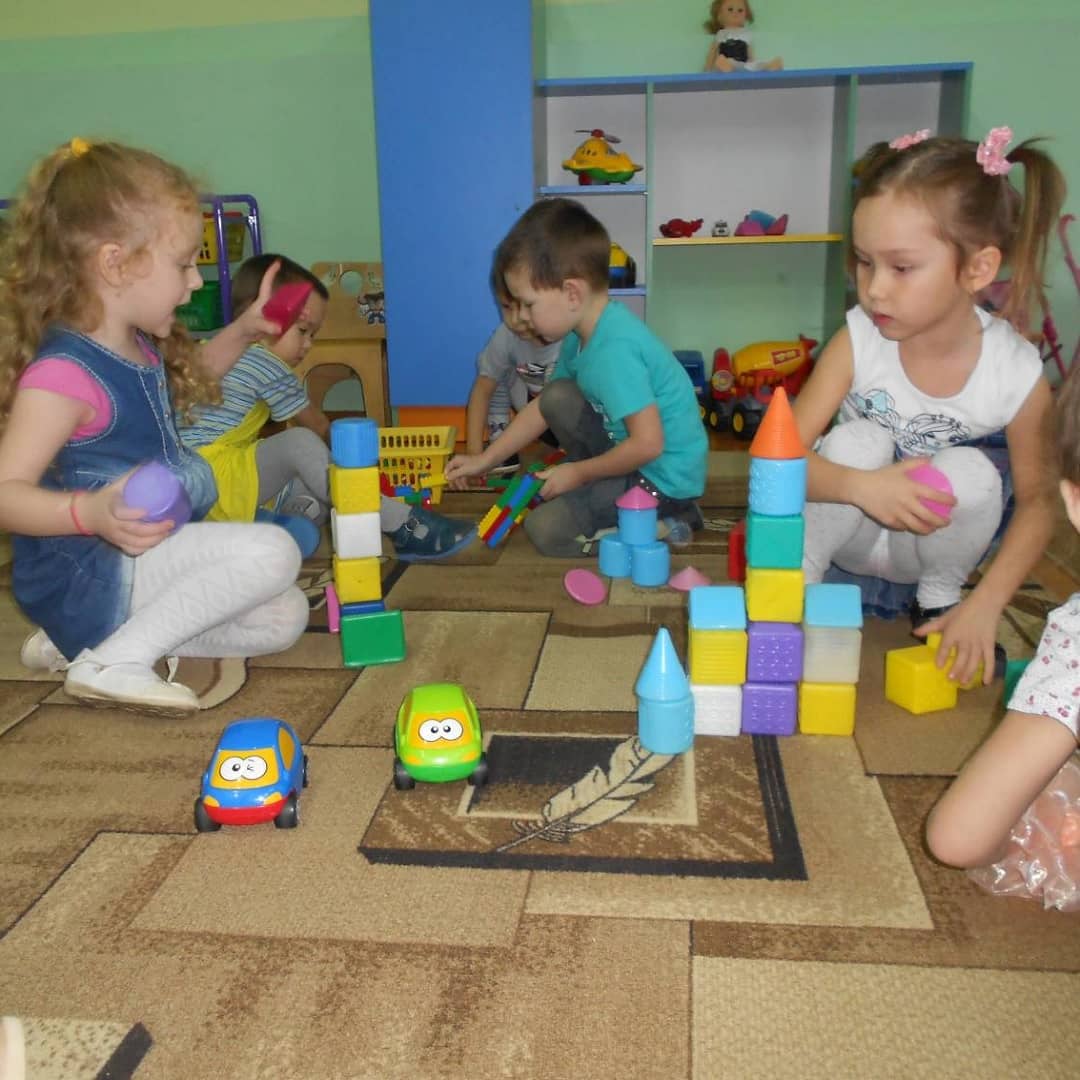
- the senior team is preschoolers 5-6 years old. When visiting an institution, each lesson should bring some knowledge and skills. Children of this age become independent, proactive;
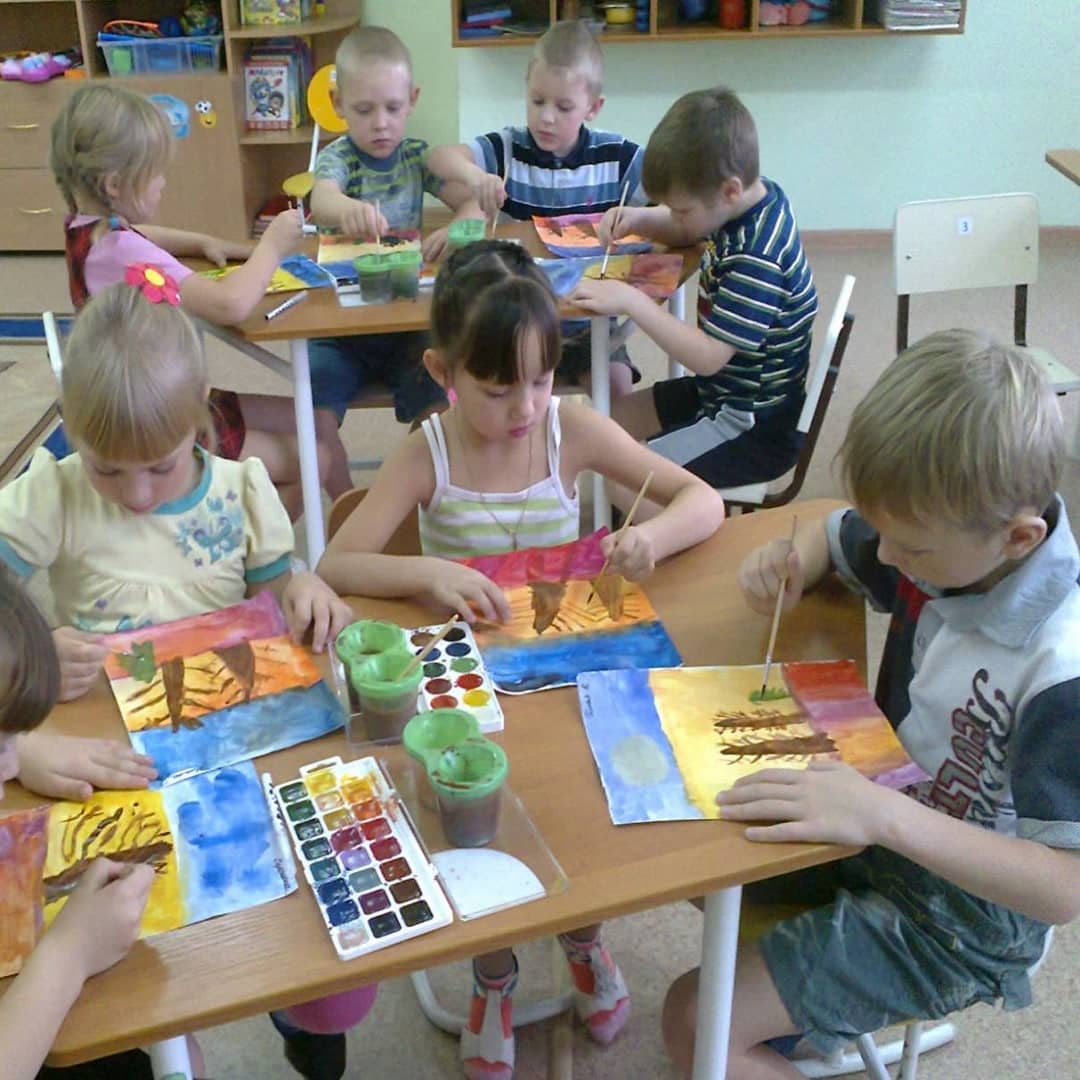
- preparatory group - pupils up to 6 years. The focus of the team is preparation for school. The children receive certain knowledge and skills that will help them in their first grade.

Groups of children by time of stay
In addition to the standard breakdown of pupils, there are other formation criteria. One of these is the allocation of preschoolers by time of stay. According to the charters of the preschool educational institution and the Regulations, the standard time spent in the institution is from 7:00 to 18:00 (in some cases until 19:00). But there are exceptions. Such groups of children in kindergarten visit the following teams:
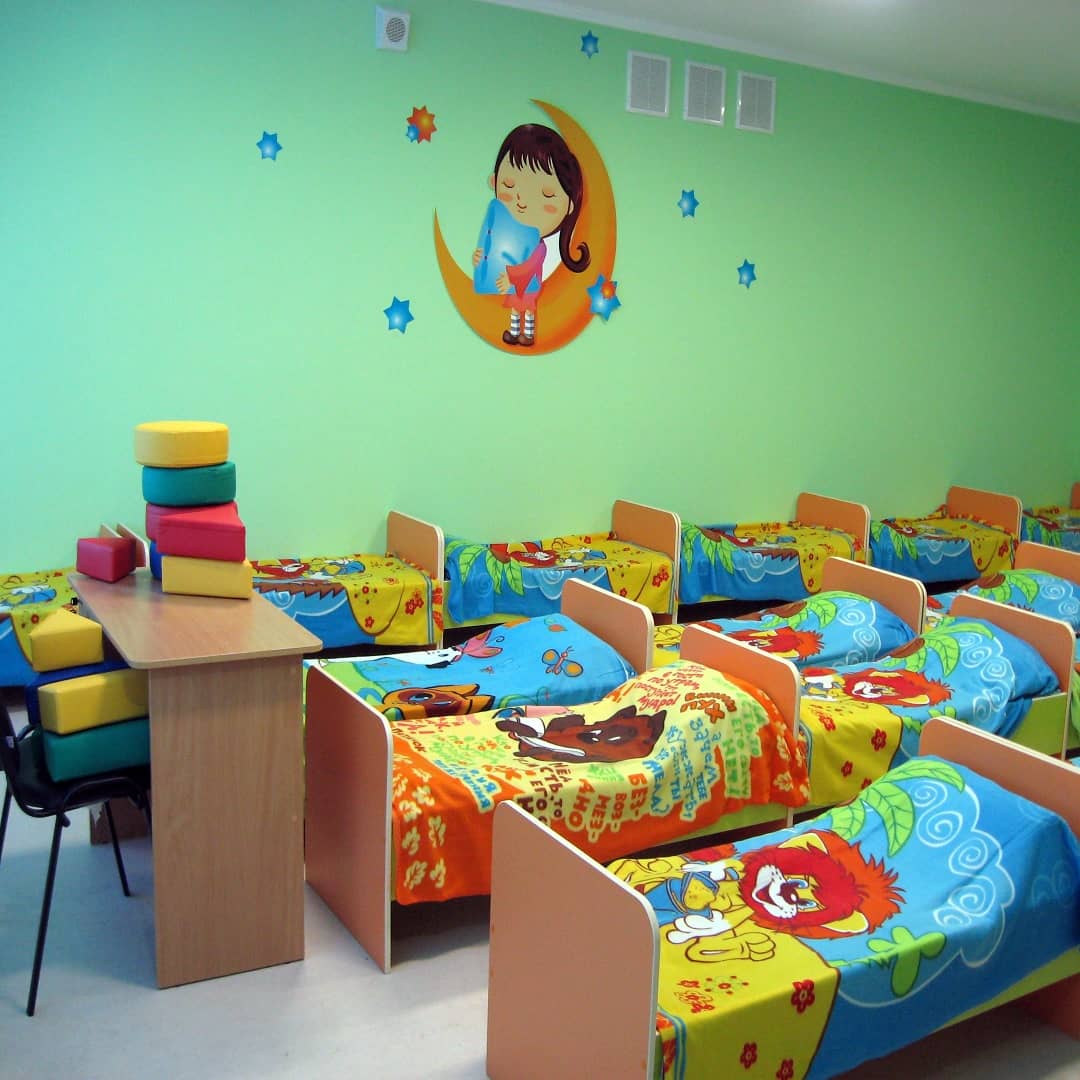
5. PERIODS OF CHILDHOOD AND THEIR CHARACTERISTICS
The entire stage of human maturation is divided into several age periods.
The age period covers a period of time during which the processes of growth, development and functional characteristics of the body are the same. At the same time, the age period is the length of time necessary to complete a certain stage in the development of the organism and achieve its readiness for the corresponding activity at this stage.
This pattern formed the basis of age periodization - the association of children by age in the organization of scientifically based processes of nutrition, education and study, the regime of mental and physical activity.
The first periodization of human growth and development was proposed by the Russian pediatrician N.P. Gundobin (1906).
In 1965, a biological age periodization scheme was adopted, proposed by the Institute of Physiology of Children and Adolescents (Moscow). Identification of 7 periods of maturation of the organism was based on an assessment of the characteristics of individual development, including a set of characteristics considered as an indicator of biological age - body and organ size, body weight, ossification of the skeleton, teething, and the degree of puberty.
Modern physiology, considering the period of maturation of the child's body from the moment of fertilization of the egg, divides it into 2 stages.
The intrauterine stage includes: 1) the phase of embryonic development (0-2 months); 2) the phase of fetal development (3-9 months).
The extrauterine stage includes:
1) neonatal period, or neonatal (0-1 month); 2) breast (postnatal) period (1 month - 1 year); 3) early childhood period (1-3 years); 4) preschool period(3-6 years); 5) school period, which, in turn, is divided into junior school (6-9 years old), middle school (10-14 years old) and senior school (15-17 years old) (E.P. Sushko et al., 2000 ).
Age periodization is a conventional designation of age, taking into account the properties of the organism of children that change in the process of development. Developed for the scientific substantiation of the health protection system and the development of the physical and mental capabilities of children, methods of education and training. In these processes, it is necessary to take into account the peculiarities of the development of a single individual, who has certain differences in the genetic code and a complex mosaic of human life conditions. That is why the calendar (passport) age of children does not always correspond to their biological maturity. The difference between the calendar and biological age in pathology can reach 5 years (GN Serdyukovskaya, 1989). Reasons for lagging retardation(from lat. retardation - slowdown) of individual development may be prematurity of the child, birth trauma, intoxication, rickets, as well as the influence of adverse social conditions (drunkenness of parents, neglect of children, etc.). Children who are ahead of biological age are less common. Most of them are girls. Characteristic for such children are overweight, chronic tonsillitis, vegetovascular dystonia.
In 1935, E. Koch proposed the term acceleration(from lat. acceleratio - acceleration) to denote changes in the growth and development of children in the 20th century. compared with the pace of these processes in the XIX century.
In the modern generation, the stage of biological maturation ends really earlier. Acceleration of development comes from an early age: the body weight of newborns increased by 100-300 g, body length - by 1.2-1.5 cm (Yu.A. Yampolskaya, 1980). Doubling the weight occurs already in the 4-5th month, and not in six months. A year earlier, the change of milk teeth is completed (V.N. Kordashenko, 1980). Acceleration shifts are most pronounced in adolescence.
The acceleration phenomenon is explained by the influence of a wide range of factors on the biology of a modern person (ionizing and radioactive radiation; heterosis associated with the migration of the modern population: urbanization, chemicalization, etc.) and does not always have a positive effect on the body of children. Modern experts believe that the pace of acceleration has noticeably decreased in recent years.
The division of children into age groups in DDU. For more successful work with children, it is considered appropriate to divide into age groups. This takes into account the totality of the anatomical and physiological characteristics of children, living conditions, upbringing and education of children. Each age group should correspond to optimal conditions that ensure the normal development of the child's body and the formation of his personality.
In preschool institutions, groups are completed taking into account the age of children (Table 1.1).
At the present stage, due to the long maternity leave of women (from 2 months to 3 years), the number of nursery groups in ordinary kindergartens has significantly decreased, but they are in orphanages.
* The composition and area of the premises of the kindergarten. Guide to the construction standards of the Republic of Belarus; 3.02.01-96 to SNiP 2.08.02.89. 1996. S. 7.
In the existing age periodization, insufficient attention is paid to the period of intrauterine development - the life of the embryo and fetus in a different environment, where part of onto- and phylogenesis takes place. However, the further growth, development and health of the unborn child largely depends on this period.
Table 1.1
Groups in preschool institutions corresponding to age periods
|
Number of children (persons) |
||
|
1. Nursery Junior |
10 (maximum) |
|
|
2. Nursery Senior | ||
|
3. Preschool: |
3-6 years (according to medical certificate more than 7 years) | |
|
4. Different age | ||
|
5. Weakened health | ||
|
6. Short stay |
no more than the appropriate age |
The period of intrauterine development of the body lasts from the moment of fertilization of the egg until the moment of birth of a person and is 9 calendar months, or, on average, 280 days. In the first three months, the formation of the fetus occurs. This period was called the phase, or stage, of embryonic development. In this phase, the internal environment of the mother's body is the environment of the fetus.
At the stage of embryonic development (from the 8th day to the 10th week), organogenesis is carried out - the formation of all internal organs and systems of the unborn child. Various chronic infections and intoxications, harmful professional factors can affect the development of the embryo, in addition, embryonic cells are very sensitive to various stimuli. Exposure to harmful factors causes embryopathies - diseases of the prenatal period, leading to malformations in children. This period is considered a critical period of development.
From the beginning of the 3rd month, the phase of placental development begins (from the 12th week to birth), in which further development internal organs. The early placental period is an important stage in the development of the fetus, since the correct formation of the placenta, and hence the placental circulation, ensures further normal growth and development of the fetus. Various diseases of the mother, toxicosis (as a result of smoking, alcohol, drugs) lead to impaired placental circulation.
The characteristic features of this period are: the rapid growth of the fetus, further differentiation of organs, the formation of the main structural and functional features of the unborn child. Various adverse factors (endo- and exogenous) in this period cause growth retardation, differentiation of organs and tissues and lead to the birth of a premature baby. Many diseases of the fetus, which are often associated with early infections (infection occurs transplacental), such as AIDS, rubella, influenza, listeriosis, toxicoplasmosis, yersiniosis, brucellosis, syphilis, as well as various toxicoses, including medication, also have a negative effect.
The later (fetal) stage is characterized by the accumulation of microelements, some vitamins in the fetal body, and the maturation of enzyme systems. Damage to the fetus during this period can cause intrauterine malnutrition, functional failure of systems and organs, premature birth, congenital infections.
The neonatal period lasts from the moment of birth and up to 28 days of life. This period is divided into early (0-6 days) and late (7-28 days). The neonatal period is the most responsible and critical, accompanied by great stress for the child. Severe stress reaction of the body is confirmed by deep morphological and functional changes in the endocrine, nervous and other systems of internal organs. Changing living conditions - existence outside the mother's body - forces the newborn to adapt to new environmental factors.
The main changes taking place in the child's body are adaptation to new living conditions, the emergence of pulmonary respiration, the restructuring of the circulatory apparatus, the gastrointestinal tract, and changes in metabolism.
During intrauterine development, gas exchange occurs through the placenta, after childbirth, the lungs straighten out, and pulmonary respiration occurs. "Starting" constant large and small circles of blood circulation. The type of digestion completely changes due to a change in the child's diet, in the first 24-48 hours the intestines are populated by various bacteria.
During this period, a condition may develop that indicates a violation of the adaptive capabilities of the child's body in environmental conditions. This condition is observed in violation of hygienic nutritional standards, care regimen and is called transient (transitional). All this is reflected in the functions of the organs and systems of the newborn, often causing their violation.
There is a transient loss of the initial body weight on the 3rd-4th day of life (by 5-6% of birth weight) as a result of starvation and loss of water during the onset of autonomous processes of respiration, urination, etc. Prevention of this disorder is early attachment of the child to the breast . With a sharp change in ambient temperature, such children easily overheat or cool down as a result of the imperfection of the body's thermoregulation processes. Therefore, it is necessary to maintain an adequate temperature regime (using incubators for premature babies, etc.), which is determined by the degree of maturity of the child and the ambient temperature.
In the first days of life, newborns develop an increased concentration of bilirubin, which in 60-70% of cases is accompanied by icteric coloration of the skin and mucous membranes; this is due to the accelerated hemolysis of erythrocytes containing hemoglobin F, and the low activity of liver enzymes that bind bilirubin to glucuronic acid.
Newborns develop a hormonal imbalance, or crisis, due to an increase in the blood of maternal hormones - estrogens, coming through mother's milk. Possible engorgement of the mammary glands, spotting in girls from the vagina, rash, pigmentation of the skin around the nipples and genitals, on the face, etc.
Significant transient shifts are noted in the function of the kidneys, the cardiovascular system, and in metabolic processes.
In a later, neonatal period (end of the 1st - beginning of the 2nd week), under normal conditions of nutrition, implementation of the regimen and care of newborns, most disorders almost completely disappear. But there are boundaries of adaptation, beyond which, under the influence of negative factors, the disease develops. Diseases of children of this period are different. Some are associated with impaired intrauterine development (prematurity, developmental anomalies), others with birth trauma (intracranial hemorrhage, bone fractures, asphyxia), and others with heredity (hemophilia, mental retardation). Viral and bacterial infections often result in stillborn babies or babies unable to survive outside the mother's body.
Newborns are very sensitive to pyogenic infection, which can cause sepsis, penetrating most often through the umbilical wound, damaged skin, etc.
Infancy (postnatal period) lasts from 1 month to 1 year. This period is characterized by a rapid increase in height, body weight, intensive metabolism, development of statics and motor skills.
In order to ensure enhanced growth and development of children of the 1st year, more food per 1 kg of body weight is needed than older children. But the digestive tract at this age is not sufficiently developed, and even with a slight violation of nutrition, quality and quantity of food in children, both acute and chronic disorders of digestion and nutrition, beriberi can occur.
Insufficient development of the digestive organs and their limited function (breast milk is the main food up to 5-6 months of life) can be the cause of diseases of the gastrointestinal tract (gastrointestinal tract).
Acute childhood infections (measles, rubella, scarlet fever, etc.) are rare in infancy, and in cases of infection, the disease is more severe; they differ in the prevalence of common signs and the low expressiveness of specific local symptoms. The skin and tissues of infants are delicate and easily damaged. However, due to the presence in the tissues of a large number of capillaries and young cellular elements, when damaged, healing occurs faster than in adults.
The relative rarity of infectious diseases in children of this age is due to the immunity that they received from the mother through the placenta, and reinforced during the year with antibodies contained in mother's milk.
The pre-preschool (nursery) period lasts from 1 to 3 years. In this period, the growth and development of the child is already at a slower pace. The increase in height is 8-10 cm, weight - 4-6 kg per year. The proportions of the body change significantly, the size of the head decreases relatively from 1/4 of the body length in a newborn to 1/5 in a 3-year-old child (Fig. 1.1). The complication of the function of the gastrointestinal tract, the presence of teeth (there should be 8 by the end of the year) are the basis for starting artificial feeding of the child.
In the 2nd year of life, intensive growth and formation of the musculoskeletal system takes place. Improvement of the central nervous system and knowledge of the environment contribute to the development of motor skills, active participation in games. Children can sit, walk and run on their own. The vocabulary increases significantly (200-300 words); They can pronounce both single words and whole phrases well.
newborn 2 years 6 years 20 years
Rice. 1.1. Change in body proportions with age
Wider contacts with the environment, with children, adults create a threat of infection with infectious diseases. At this time, passive immunity received from the mother is weakened, and the possibility of infectious diseases (measles, chicken pox, whooping cough, scarlet fever, dysentery, digestive disorders, respiratory diseases) increases.
The skin and tissues remain delicate, easily injured, which requires careful care and appropriate hygiene practices.
Preschool age lasts from 3 to 7 years. This period is characterized by an even greater slowdown in the growth rate of the child. The annual increase in height is on average 5-8 cm, body weight - about 2 kg. The proportions of the body also change significantly - by the age of 6-7 years, the length of the head is 1/6 of the length of the body, and the growth of the limbs accelerates (see Fig. 1.1). There is a further improvement of the central and peripheral nervous system, the development of muscle tissue, which enables children to perform various physical exercises that require precise coordination of movements. This contributes to the development of movements and skills - children run a lot and quickly, walk on tiptoe, play musical instruments, draw, cut paper crafts, etc.
Due to further neuropsychic development, the strengthening of negative induction in the cerebral cortex, the functional ability of nerve cells increases, so children can engage in any kind of concentrated activity for a longer time. The stock of words is significantly replenished, speech signals play an increasing role in the child's behavior. The development of speech is facilitated by various games, activities, learning poems, songs, relationships between children and adults. Mastering speech, pronunciation of individual words and phrases, the child learns through adoption, so the formation of correct speech depends on the people around him. To prevent speech delay, adults need to be attentive to the child, monitor their own and his speech.
Children aged 3-5 years have insufficiently developed motor skills of speech, as a result of which they are characterized by physiological shortcomings in the pronunciation of certain sounds: a violation of the pronunciation of hissing and whistling sounds, as well as "p", "l", "k", etc. With proper learning of sound culture of speech, these shortcomings quickly pass. In cases of delay in the development of speech motor skills in children in preschool institutions and schools, its setting is carried out by speech therapists.
At preschool age, the proportion of acute viral infections - influenza, acute respiratory infections - increases. Respiratory diseases take the first place. Inflammation of the lungs is more often observed at 2-4 years of age, and by the 7th year it occurs most often as a complication of viral diseases.
Until the end of preschool age, the number of cases of chronic tonsillitis, a tendency to rheumatism increases, the number of visual impairments, allergic diseases, neurotic disorders almost doubles.
At the end of the preschool period, the structure of chronic diseases in children is distributed as follows: diseases of the digestive system are in the first place; on the second - diseases of the respiratory organs (primarily the nasopharynx); on the third - diseases of the musculoskeletal system and connective tissue (flat feet, scoliosis, etc.); on the fourth - diseases of the nervous system and sensory organs (neurosis, myopia, enuresis, otitis media, etc.); on the fifth - skin diseases (diathesis, etc.). Consequently, the main attention of educators, teachers, doctors should be directed to the timely prevention of health disorders in children, the identification of existing deviations and the adoption of appropriate measures for their treatment.
School age starts from 6-7 years old and lasts until 17 years old. A normally developed 6-7-year-old child is morphologically and functionally ready for schooling.
The child's nervous system, analyzers, endocrine and other systems have acquired sufficient functional maturity. The replacement of milk teeth by permanent ones ends. Purposeful studies at school are not only feasible, but also useful for children, they improve the central nervous system, in particular the cerebral cortex, innate reactions and abilities, create conditions for the development of new connections and reactions, and contribute to faster development.
The name of the group in kindergarten has great importance. Both adults and children are much more interested when, instead of the usual " junior group" or "group number 2" sounds any interesting name. Then there is individuality. To come up with something new and original is a tricky and subtle job that requires thoughtfulness. After all, what do you call the ship ... Currently, almost all children's institutions are abandoning the standard numbering. So what are the principles of this choice?
Firstly, the name should be associated with the concepts of "childhood" and "happiness", be harmonious and understandable to children. For example: "Rostochek", "Joy", "Smile", "Flowers of Life", "Our Children", "Kinderly land", "Sparrows", "Pants with straps". Do not infringe on anyone's copyright. It is known that several children's institutions in Russia have already received lawsuits from Ilya Reznik for using the name "Little Country".
Secondly, it is desirable that the name of the group in the kindergarten matches the general style of the kindergarten. If the kindergarten is “Fairy Tale”, then it is logical to call the groups “Alyonushka”, “Winnie the Pooh”, “Thumbelina”, “Cinderella”, “ Emerald City". And for "Birch" or "Polyanka" all kinds of "Berries", "Strawberry", "Ladybugs" and "Borovichki" will be appropriate.
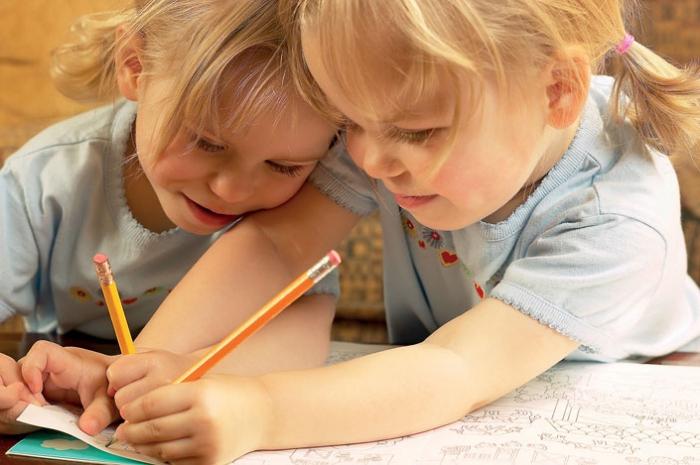 Thirdly, the name reflects the characteristics of the team, its focus, for example, if the group is speech therapy, linguistic, creative, then the name should be given to it accordingly: “Letters”, “First Steps”, “Watercolors”, “Harmony”, “Notes” , "Drawing", or "Newbe" (Beginner). Fourthly, it should be borne in mind that the name of the group in kindergarten also implies appropriate design. If the room is already decorated in a certain style, then the group located in it will have to be given a name that matches the design.
Thirdly, the name reflects the characteristics of the team, its focus, for example, if the group is speech therapy, linguistic, creative, then the name should be given to it accordingly: “Letters”, “First Steps”, “Watercolors”, “Harmony”, “Notes” , "Drawing", or "Newbe" (Beginner). Fourthly, it should be borne in mind that the name of the group in kindergarten also implies appropriate design. If the room is already decorated in a certain style, then the group located in it will have to be given a name that matches the design.
Well, the last question affecting the naming. For what period in the kindergarten is the name given to the group: for the entire period of its stay in the institution, or does the team change the plates every year as the children grow up? For each children's institution, this issue is resolved independently. The second option is more often used, when the name of the group in kindergarten is selected by age.
For younger age usually use diminutive names. Some institutions involve parents in this process. The main rule is that the name should be simple, understandable to young children, not too cunning and original. It is prudent to use the names of plants, animals known to children of this age, or the names of cartoon characters. For example: “My Kitten”, “Candy Kids”, “Squirrels”, “Sparrows”, “Winnie”, “Brownie”, “Angels”, “Karapuziki”, “Dandelion”, “Frogs”.
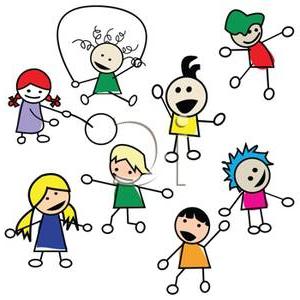
At the age of 4-5 years, children can already take part in the selection of a name for their group. It is not necessary to take their idea, but you need to ask them. Maybe it is the options for the kids that will prompt the right word. You need to choose a gender-neutral name that will satisfy both boys and girls. At this age, a transition to more abstract ideas is acceptable. It is proposed: "Shustriki and Myamliks", "Postrelyata", "Madagascar", "Why", "Cubes", "Smeshariki", "Sputnik".
Moves away from children's themes closer to school senior group kindergarten. The names are getting more serious. Children grow up and are quite capable of participating in the process in every way. You can offer them not only to come up with their own original titles groups, but also the motto and design elements. Such a task develops ingenuity, the imagination of preschoolers, teaches them to defend their opinion, listen to others, and correctly accept victory or defeat. Suitable examples for seniors: Hercules, Toddlers' school, Primer Books, Asta la Vista, baby!, Bambini Club, Dreamers, Kinderland, Fidgets, Znaiki, etc. .
Groups of preschoolers in kindergarten are usually divided according to age. But there are institutions where kids are distributed into different groups, referring to several breakdown principles. This article will indicate in detail how the kids are divided into teams and what groups generally exist.
Division by age
Ever since Soviet times, pupils of preschool educational institutions were divided into age categories. This method of distribution is now considered not only relevant, but also the main one. Let's indicate which units the guys are divided into:
- nursery - designed for babies from 1 to 2 years. When creating optimal conditions, they form the necessary self-service skills, and at the same time, attention is paid to the development of psychomotor function, which directly affects the development of speech;

- junior groups in kindergarten- These are peanuts aged 2 to 4 years. The task of educators is to develop their memory, thinking, and oral speech. It is carried out with the help of role-playing games;

- the average detachment of the preschool educational institution is preschoolers 4-5 years old. At this age, they form causal relationships, as well as moral, moral and aesthetic ideas;

- the senior team is preschoolers 5-6 years old. When visiting an institution, each lesson should bring some knowledge and skills. Children of this age become independent, proactive;

- preparatory group - pupils up to 6 years. The focus of the team is preparation for school. The children receive certain knowledge and skills that will help them in their first grade.

Groups of children by time of stay
In addition to the standard breakdown of pupils, there are other formation criteria. One of these is the allocation of preschoolers by time of stay. According to the charters of the preschool educational institution and the Regulations, the standard time spent in the institution is from 7:00 to 18:00 (in some cases until 19:00). But there are exceptions. Such groups of children in kindergarten visit the following teams:

In accordance with our legislation, all children have equal rights to development, education and health care, regardless of their health and psychophysical characteristics. Observing the principle of equal opportunities, a strong-willed, no other way to call it, decision was made at the highest level - to allow children with special needs for health reasons to be brought up and grow up in a team of children without such special needs.
The humanity and wisdom of this decision cannot be disputed, but at present the practice of joint upbringing of children with disabilities and ordinary babies is just being introduced. What is HIA - these are limited health opportunities, here we mean small features that allow the baby, other children and staff to stay in the same area without harm to all parties.
I have already written a series of articles specifically about children with disabilities and about what the teacher’s work with this contingent is. The essence of combined groups is that children from the very early age felt like a part of civil society, and not outcasts who are forced to take only what they give and not be able to count on more. For example, in the USSR, kids with psychophysical disabilities were never allowed into ordinary kindergartens and schools.
Therefore, the perception of people with any deviations from the norms is still cave-like. If we were brought up in the same groups from childhood, we would perceive each other with greater kindness and openness, not seeing differences between us in external manifestations.
The program of training and development in kindergarten with combined groups is drawn up in accordance with the requirements of the Ministry and taking into account the individual characteristics of the children. There are standards according to which programs are compiled, but they are adjusted depending on the state of health and physical characteristics of the kids.
Upgrading your skills with special training
In order to have the right to work as a teacher of a combined group in a preschool educational institution, you need to take courses and obtain the appropriate additional knowledge, the presence of which must be documented. My favorite "UchMag" offers an excellent opportunity to learn and receive a certificate of training in such topics:
- “Professional competence of the educator in the context of the implementation of the Federal State Educational Standard: additional education preschooler with disabilities";
- "Inclusive Practice in Combined Orientation Groups".
It is worth saying that you can safely trust the quality of the information that you will hear in the format of webinars. All materials are strictly according to the Federal State Educational Standard, the certificates of this educational portal are also legal, of the established form.
Tasks of combined groups
Before I forget, let me remind you or, who does not know, I will explain that combined groups should not be confused with compensating groups. The former consist of healthy children and special ones, while the compensating ones are designed for babies with the same type of features. More often these are problems speech development. Today, almost every kindergarten has speech therapy groups, so they are compensatory.

One more thing can be added about compensating groups: yes, children with speech disorders can be in combined groups, but if a large number of children with, say, speech disorders are recruited in the kindergarten, then it is easier and more expedient to teach them according to a specially developed correctional program. So the correction of violations will be most effective.
The occupancy of compensating groups, in general, as well as combined groups, is within sanitary norms, no more than 16 people.
But back to the tasks of combined groups:
- Enabling children with disabilities to receive quality preschool education in preschool;
- Building educational program taking into account the characteristics of each child in terms of inclusive education;
- Ensuring the full maximum integration of children with disabilities into the team of ordinary children by creating a barrier-free space for the interaction of all members of the educational process;
- Organization of effective interaction with the parents of pupils to create conditions for the full development in preschool institutions and at home;
- Constant psychoprophylactic work with parents of healthy and children with disabilities on the topic of creating a favorable psychological atmosphere in the group;
- Assistance to parents in the form of consultations and training in the upbringing and development of children;
- Motivation of parents of pupils for active involvement in the processes of education and development of children, taking the initiative and providing assistance to teachers;
- Correction-pedagogical, medical, psychological and social correction of the state of children with disabilities.
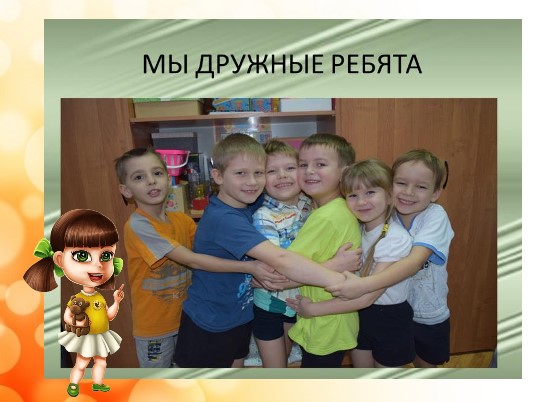
In other words, ordinary children and toddlers with special needs from an early age should learn to respect each other and have equal opportunities for implementation.
Indications for determining the baby in the combined group
If you yourself want your child with special needs to be brought up and educated in a combined group, and there is one in the kindergarten, then you apply for admission in the name of the head. In addition, you need to bring different documents:
- Birth certificate or copy;
- Conclusions of doctors: ophthalmologist, speech therapist, neuropathologist, otolaryngologist, orthopedist;
- Extract from the history of the development of the child;
- Recommendation of a teacher-psychologist, speech therapist preschool if the child is already attending kindergarten.
Next, you will need to take a referral and go through a special commission, which gives an opinion on the possibility of a child visiting such a group. Usually, the Regulations on the group of combined orientation of a particular kindergarten prescribes the conditions for admitting children to this group.

Since now in the preschool educational institutions of most regions of our country the occupancy rate is high, there is a practice of placing a child in a queue for admission to a kindergarten. Therefore, I advise you to take care of collecting all kinds of certificates, etc. in advance. I know that some kindergartens have opened electronic registration in queue. So don't leave this question to the deadline.
I also wanted to raise such a delicate issue as the negative attitude of some parents of healthy children to raising them together with children with disabilities. Yes, it happens that mothers directly rebel against the combined group, believing that this can harm their child.
I want to say the following: in the experience of my colleagues who have been working in combined groups for a long time, both parties benefit. healthy babies, brought up in the same team with special children, they become more sensitive, kind and tolerant of the shortcomings of other people. They are accustomed to perceive comrades with disabilities as equals, not paying attention to any features of appearance and health.
The number of children with developmental disabilities and physical disabilities is growing every year. Therefore, the task of a civilized society is to provide such people with an equal position in all spheres of life.
I'll add a few more words...
Here is the son of my friend who, through an acquaintance, got into a kindergarten for children with visual impairment, because it was more convenient for them. Here the boy is accustomed to seeing children with glasses, with strabismus, who cannot see well. And when he got into the class, where there was only one boy with glasses, he could not understand why they were laughing at him, because he simply did not see well ...
Remember, in our Soviet childhood at school, everyone who was at least somewhat different from the masses was teased: bespectacled, lop-eared, too fair-skinned, and vice versa - swarthy, plump and thin. Being like everyone else was considered commendable. Today, the humanity of society has grown, I think. They tease much less in children's groups and give less offensive nicknames.
Do you think I'm right? Tell us how things are going with this in your children's classes?
If the topic of the article seemed interesting to you, share it with your friends on social networks and ask you to subscribe to the news.
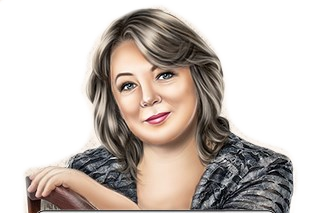
Sincerely, Tatyana Sukhikh!
